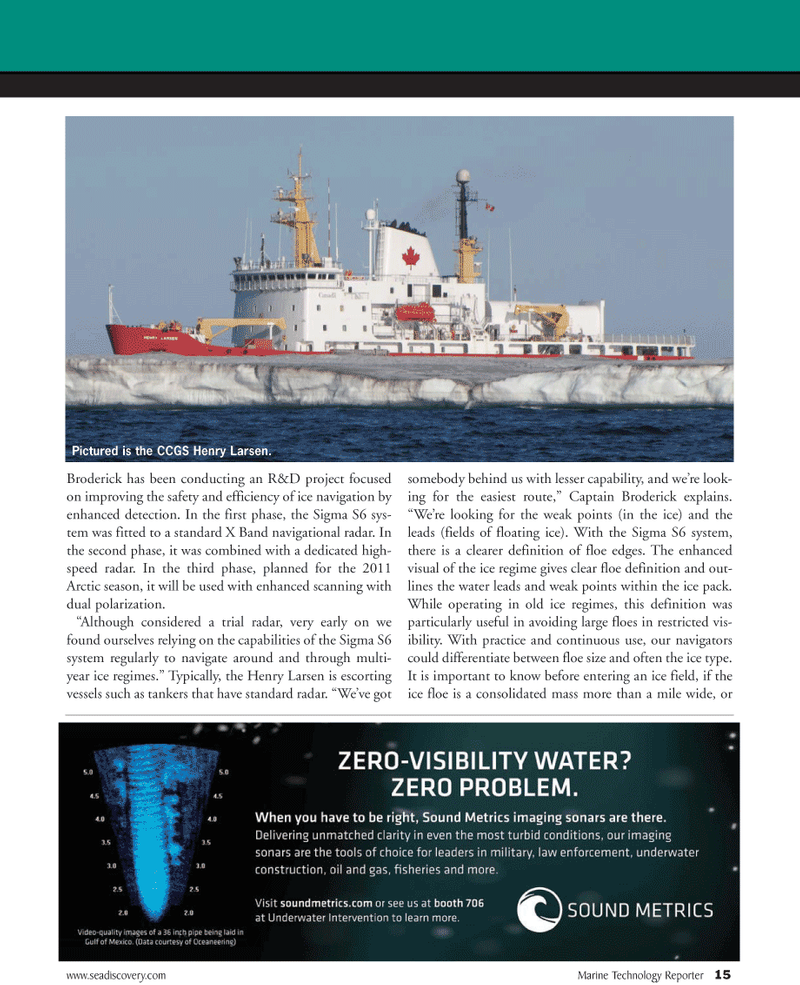
Page 15: of Marine Technology Magazine (January 2011)
Marine Salvage & Recovery
Read this page in Pdf, Flash or Html5 edition of January 2011 Marine Technology Magazine
www.seadiscovery.com Marine Technology Reporter 15
Broderick has been conducting an R&D project focused on improving the safety and efficiency of ice navigation by enhanced detection. In the first phase, the Sigma S6 sys- tem was fitted to a standard X Band navigational radar. In the second phase, it was combined with a dedicated high- speed radar. In the third phase, planned for the 2011
Arctic season, it will be used with enhanced scanning with dual polarization. “Although considered a trial radar, very early on we found ourselves relying on the capabilities of the Sigma S6 system regularly to navigate around and through multi- year ice regimes.” Typically, the Henry Larsen is escorting vessels such as tankers that have standard radar. “We’ve got somebody behind us with lesser capability, and we’re look- ing for the easiest route,” Captain Broderick explains. “We’re looking for the weak points (in the ice) and the leads (fields of floating ice). With the Sigma S6 system, there is a clearer definition of floe edges. The enhanced visual of the ice regime gives clear floe definition and out- lines the water leads and weak points within the ice pack.
While operating in old ice regimes, this definition was particularly useful in avoiding large floes in restricted vis- ibility. With practice and continuous use, our navigators could differentiate between floe size and often the ice type.
It is important to know before entering an ice field, if the ice floe is a consolidated mass more than a mile wide, or
Pictured is the CCGS Henry Larsen.

 14
14

 16
16
